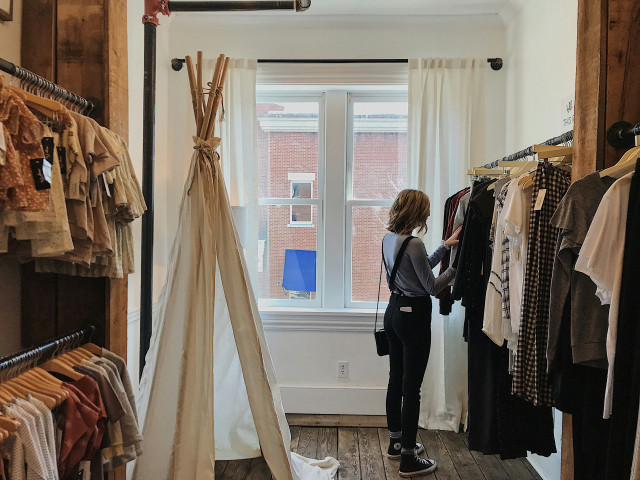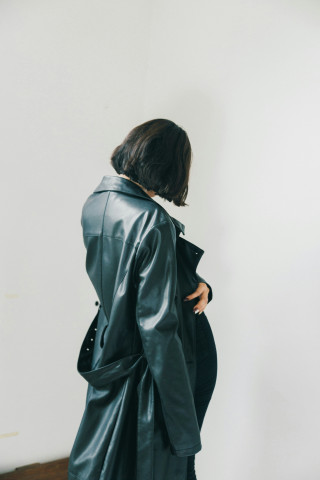Every week, there are new developments in sustainable fashion, spanning everything from brick-and-mortar retail to ethically-conscious but ultra-niche online brands. We’ve rounded up the most important news from the last month; consider this your Estilistas-approved fashion sustainability bulletin as we move into the end of the longest month and you start to scroll Pinterest for spring outfit inspiration.
You could be forgiven for assuming that the “high street” concept is over. Shuttered shop fronts make for old news, don’t they? This is particularly true for anywhere outside of a regional capital, where larger shops have progressively moved out of town and into the sort of soulless cinema/soft play/supermarket arrangements that have characterised post-recession retail.
The pandemic was another blow to an already uneasy recovery, proving lethal to chains such as House of Fraser, Debenhams and the Arcadia Group (I’m still in mourning for Topshop, myself).
But the expansive units these names have vacated can’t stay empty forever, and if nothing else, the struggles that in-person retail has experienced over the last decade have forced an innovative rethink of what the ‘High Street’ can be, fashion-wise and beyond.
The High Streets Task Force's vision for 2030 emphasises a need for much more independent retail offerings, improved accessibility and walkability, and even blending residential buildings with shops to ensure that these areas are truly lived in and become the natural focal points of communities.

A lack of diversity in British high streets was underlined as an area of concern, and I can’t help but agree. Make a list of all the chains present in a mid-sized British town and compare it to another, and you will probably find little-to-no variation.
Sustainability in the context of the future British high street needs to be accompanied by business conditions that are much friendlier to independents and shops carrying locally made goods. We may perhaps even witness a renewed appreciation for the artisanal maker as artificial intelligence begins to automate many digital tasks and the labour market adjusts accordingly.
This month, Great British Sewing Bee finalist, Raph Dilhan, writing for the Evening Standard, made the case for men to be included in the fast fashion conversation. Raph took part in the Great British Sewing Bee and notes how some men are dissuaded from sewing and fashion design because of its enduring feminine connotations.
Still, a report he cites from Statista claims the male approach to fashion buying is generally more sustainable and prioritises longevity of wear, a fact that will surprise nobody who has seen the state of their father’s sock selection.
It is refreshing to see someone making this argument, although I was keen to hear specific suggestions for what this course correction might look like. Is this the sort of subject that should be spoken about and taught in schools? Would more male celebrities being vocal about secondhand clothing help to change perceptions?
It is certainly worth considering that male and female consumers might need different forms of encouragement and distinctive rationales for changing their existing habits. This assumption is taken for granted in most arenas, from advertising to policymaking, but has been strangely overlooked concerning fast fashion consumption practices.

Despite the growing conversations around the importance of more environmentally friendly fashion practices (both in producing and purchasing), the balance of sustainability and scalability is still difficult for larger brands to achieve. Some of the bigger chains are doing more to counteract accusations of greenwashing.
Although consumers are more aware than ever of the harm of fast fashion practices, it is proving difficult for their newfound conscientiousness to be reflected in their buying habits. Closing what is often called the “attitude/behaviour gap” is one of the biggest challenges for sustainability advocates.
Following the recent footsteps of Inditex-owned Zara, H&M announced late last year that it would charge buyers a small fee for returning online or in-store items. They later clarified that the £1.99 cost would only apply to returns sent back via mail.
Although the instinct might be to scoff when a company such as H&M implements so-called sustainability measures, large industry players tend to set the benchmark for others to follow suit. This creates a sort of trickle-down effect, which can be quite effective. Once these big brand names change their business practices, it shifts the Overton window for what the average fashion consumer comes to expect, making it much easier for other companies to enact similar policies without facing a backlash.
Another way established brands become more sustainable is by accepting that the secondhand market for their products can be actively integrated into their trading. Once these are cracked down on or simply ignored, the secondhand economy is treated as an additional business opportunity.
Coach recently set up a pop-up shop selling secondhand handbags from its ranges, as well as upcycled items. The incentive of being able to trade in your Coach bag for an equivalent shop credit to put towards a new piece encourages repeat custom and rewards recycling behaviour.
It’s important for buyers to feel that they are actively benefiting from sustainable behaviours because the serotonin rewards of the fast fashion impulse shopping rush need to find their equivalents to be worthwhile. Because we are primed to consume to excess, cutting down without some form of additional benefit is an incredibly difficult sell.
Naturally, fashion brands also stand to profit from more loyal customers who will stay spending only in different ways. Some of the other upselling options now include insurance for designer handbags (as pioneered by high-end restoration specialists The Handbag Clinic), monogramming at heritage brands like Turnbull & Asser, and Denim Painting by local artisans at The Seam.
And if you are anything like me, you’ll appreciate the conscious approaches to customising, upcycling and caring for clothing that doesn’t berate you for indulging in fashion in the first place.
